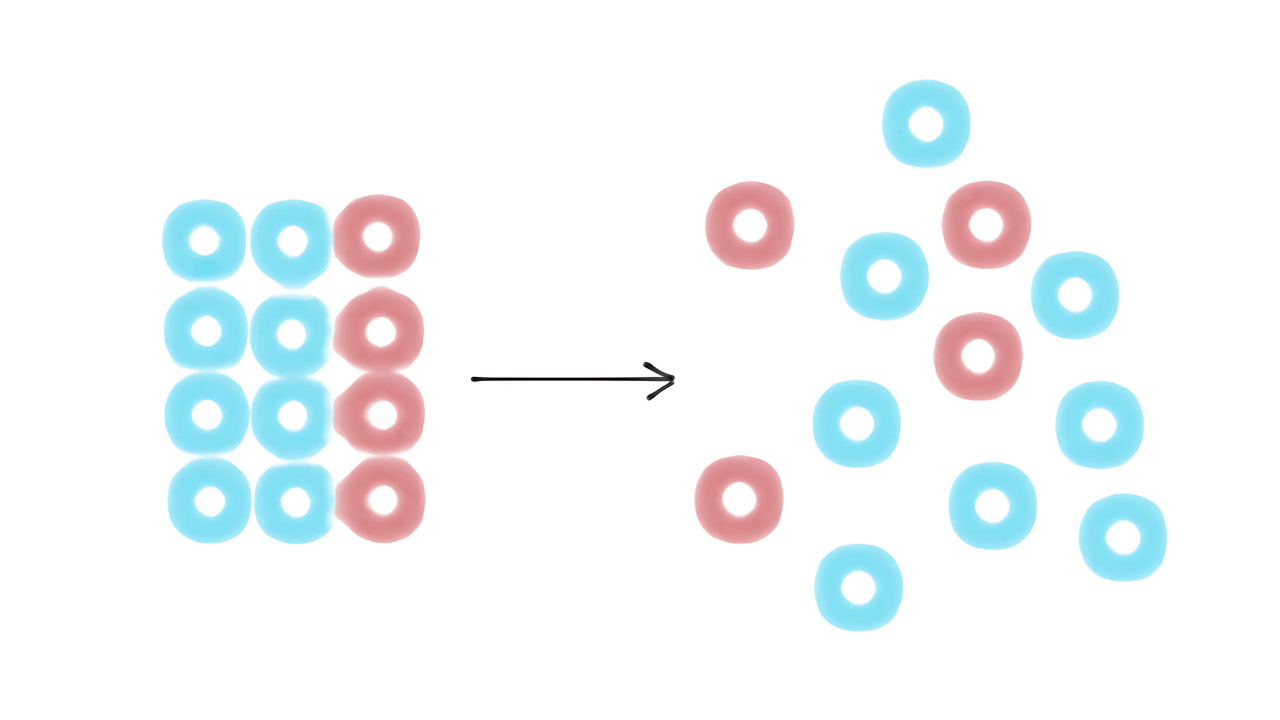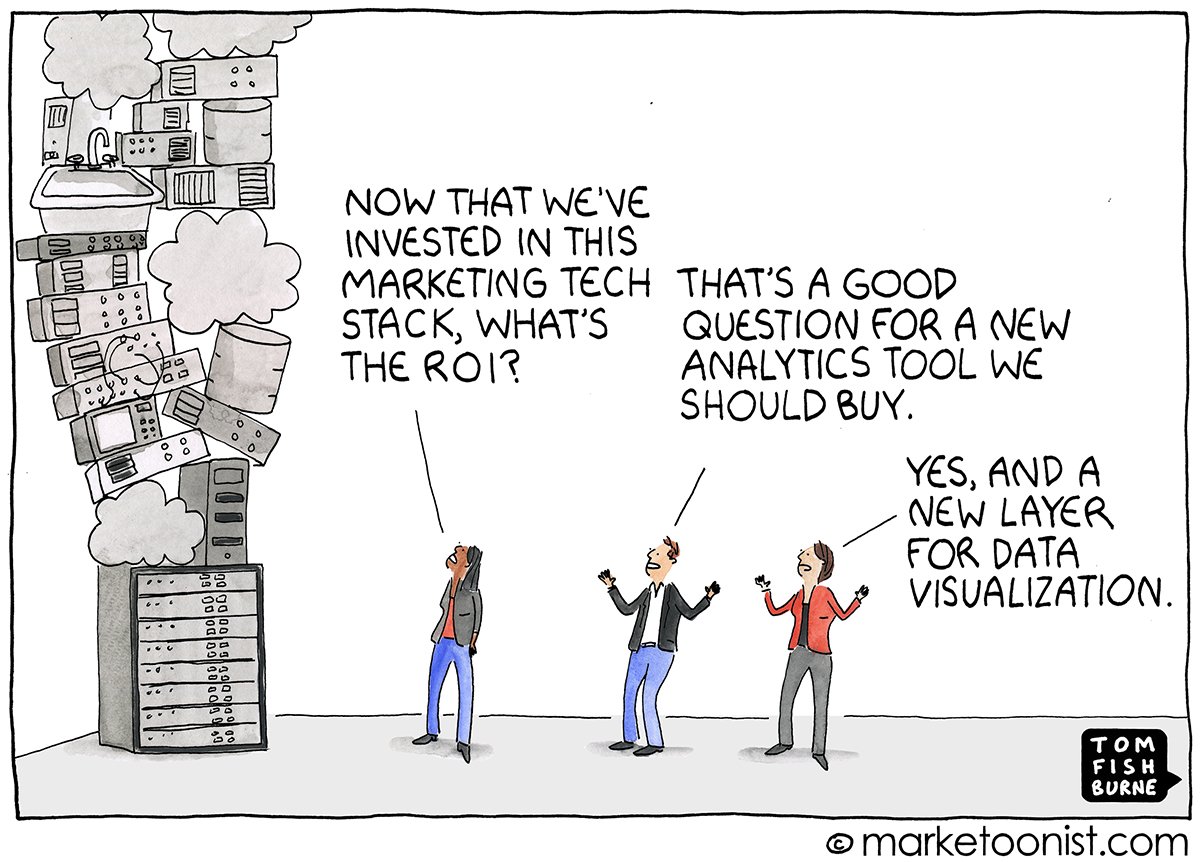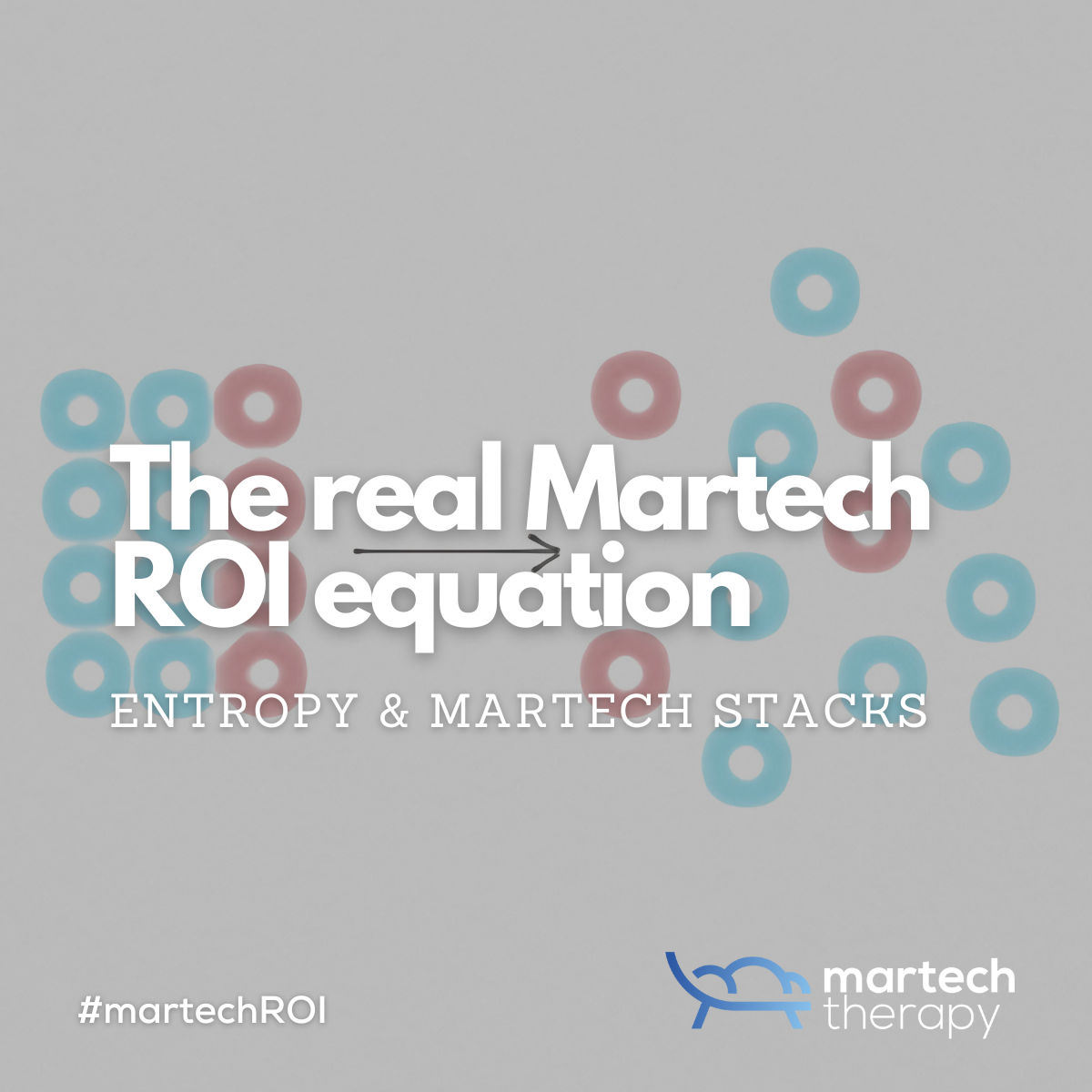Have you ever seen this quote:
“The first time you go through it, you don't understand it at all. The second time you go through it, you think you understand it, except for one or two small points. The third time you go through it, you know you don't understand it, but by that time you are so used to it, it doesn't bother you anymore.”
If you are reading this article, you might be inclined to think that this quote is from some notable Martech leader describing your Martech stack. Nothing is further from the truth. The quote is from Arnold Sommerfeld, a German theoretical physicist, describing thermodynamics. And before you think you have landed on the wrong blog, bear with me as I try to explain its link to marketing technology.
Second Law of Thermodynamics and your Martech stack
Marketers talk about ROI as if it’s just revenue minus license costs. If only it were that simple. The real drag on a Martech stack isn’t just the costs you incur for MTUs, connections, API volume, and so on. It’s the energy we spend holding the whole thing together, like duct tape. Governance meetings, patchwork integrations, cleanup projects, the hidden costs that never appear in the budget but always show up in the results, and your performance report.
C.P. Snow once said about the second law of thermodynamics that “you can’t break even”. You never defeat entropy, you only buy yourself time (I sugarcoated it a bit to make his quote sound less existential). I wasn’t triggered to dig deeper into the similarities between Martech stacks and entropy until just a few weeks ago. While driving along in my car, I came across a track on Spotify called The Second Law of Thermodynamics by NoNameLeft. Being the nerd I am, I had to listen to it.
The track includes a voice, a British lecturer (definitely not Feynman) talking about, you guessed it, the second law of thermodynamics, wrapped into an amazing techno track. Yes, I was the guy who got his Martech metaphors from a rave playlist.
I’ll admit, I never properly understood the second law of thermodynamics when I first read about it. Too abstract, too many (probability) equations. A bit like Arnold Sommerfeld’s quote. It finally clicked years later, not in a physics lab, only when I applied it to Martech, and later when I saw Brian Cox describe it with a sandcastle in that soothing voice of his.
Watching stacks drift into this natural chaos was the best crash course I could have asked for. Honestly, if schools really want teenagers to grasp entropy, they should skip the textbooks and hand them a marketing automation platform. Ten minutes of abandoned campaigns and broken integrations, and the concept explains itself. No kidding.
That said, I did enjoy physics in school, mostly thanks to my teacher, Steve Wetherall. But my real interest in the subject only deepened when I read Isaac Asimov’s Guide to Earth and Space. Watching and listening to great storytellers like Brian Cox and Carl Sagan did more than any classroom ever could. To this day, I still stand outside when comets pass, when planets align in conjunction, and I watch almost every hard sci-fi film and series I can find. It’s no wonder entropy and gravity keep sneaking into my, and other people’s, Martech metaphors.
Entropy in the stack
Back to the story… the second law of thermodynamics says that systems tend to move from order to disorder unless new energy is added. You don’t need a physics degree to see that in Martech.

A carefully integrated customer journey map turns into spaghetti the moment two new tools promise “seamless” connections. An expensive analytics platform quietly dies when its champion leaves post-implementation. Tags and pixels pile up like forgotten sandcastles, leaving ghost data for the next team to trip over.
It isn’t that marketers are careless. It’s that the stack behaves like a physical system. The more moving parts, the more ways for entropy to sneak in, which only proves that we need to put energy into it to maintain the status quo, at a minimum.
A quick question before we move on:
Does technical debt, as described above, increase the chaos?
Martech leaders and Maxwell’s demon
When researching for this article, I came across an old thought experiment called Maxwell’s Demon. Picture a tiny creature sitting at a gate between two chambers of gas, letting fast molecules through one way and slow molecules the other. If it worked, the demon could create order without effort, which physics tells us is impossible.

In Martech, leaders try to play that role, and no, they aren’t demons. But they do sit at the gate, deciding which projects get priority, which tools get retired, which integrations matter. In theory, they’re trying to resist entropy. In practice, they burn enormous energy just doing the sorting steering committees, maintaining governance docs and processes, and endless reviews. If Maxwell’s Demon wore a hoodie, it would probably be a Martech program manager.
Entropy, a friend or foe?
I’ve said before that CDP implementations act like stress tests for digital transformation. And CDPs are not immune to entropy, but remain a great place to witness the second law of thermodynamics in Martech first-hand. Every inconsistency in identity data, every governance gap, every process shortcut, it all shows up at once. Order to disorder, order to chaos.
Some leaders often blame the vendor or the tool, but that’s rarely the real culprit. It’s the second law of Martech at work. A CDP, as I’ve said repeatedly, is just the mirror to the inner workings of your organization. What you see in it is your own entropy, staring back.

Entropy isn’t always bad. In physics, it’s the reason heat spreads, life emerges, and stars eventually burn out. In Martech, a bit of disorder sparks innovation, or at least curiosity. Side projects in well-structured environments, messy pilots that expose organizational shortcomings, even “rogue” tools sometimes create breakthroughs.
The trick is knowing when entropy is useful exploration and when it’s just corrosion. Innovation thrives at the edges; operations rot at the core if not maintained. If you’ve ever found a brilliant use case hiding in someone’s unsanctioned spreadsheet or Notion workspace, you know what I mean.
So how do you resist entropy? Not by wishing it away, and definitely not leaving it to its own devices. You resist it with energy. You resist it by putting effort into the processes: pruning unused features, monitoring integrations, documenting workflows, making governance more than a quarterly slide you share up the chain.
It’s invisible work. Nobody gives you a standing ovation for deleting 400 stale tags. But when nobody does it, the whole stack starts to crumble.
The real ROI equation
Now a show of hands of people who have seen the following calculation in RFPs. Contrary to what we often think, ROI isn’t just revenue minus license fees and hosting costs. If you really want the equation, it looks more like this:
The stack costs are the obvious ones: licenses, infra, and professional services. But the real drag comes from the human energy we spend holding things together: the people running governance meetings, the operators patching integrations, the specialists rewriting documents, the team leads training new hires. This is something I like to refer to as EDE, or Entropy Delaying Energy (because remember, there is not stopping it). That investment rarely shows up as a neat line item, but it eats into ROI just the same. And if you starve it, entropy charges you in other ways, outages, rework, broken journeys, lost revenue, simply called REL, or Residual Entropy Loss.
Too little energy and the stack collapses under its own weight, under built up REL. Too much energy and you drown in bureaucracy. The ROI sweet spot is somewhere in between, where you put in just enough effort to keep the sandcastle standing and balance out EDE and REL. More on these calculations in future articles.
Sandcastles in the wind
In a sense Snow was right. There’s no final victory, just the temporary order we buy with attention and effort. The Martech stack is a sandcastle, and the wind is always blowing. Just like Juan Mendoza and Jacqueline Freedman discussed in their podcast when discussing business, nothing lasts forever. Everything will eventually collapse. We need to be realistic about that.
Maybe the strategy isn’t to pretend we can stop entropy. Maybe it’s to accept that order is temporary, and to find a rhythm of building, repairing, and rebuilding. That isn’t failure, but without the realization that human energy is needed to maintain effectiveness, it will all collapse.
To quote Arnold Sommerfeld again “thermodynamics is a funny subject”, but so is Martech. We think we understand it, but every there is something new to learn, and apply.
So the real question is this:
How much energy are you spending holding the sandcastle together, and is it giving you the ROI you think it is?
Want a front row seat at reading my thoughts on Martech? Subscribe for free 👇🏻



Discussion